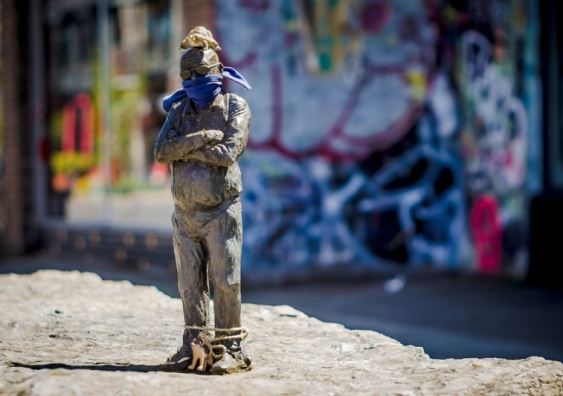Documenting the COVID-19 pandemic for future generations
2020 may be a year many will want to forget, but it’s important we record our experiences during the pandemic for future generations and scholars.
2020 may be a year many will want to forget, but it’s important we record our experiences during the pandemic for future generations and scholars.

The date is Saturday, 4 April 2020. The Facebook post reads: “Just so I never forget. Social distancing measures are on the rise; panic buying has been happening for weeks and there is a shortage of toilet paper, disinfecting supplies, paper towel, soap, and there’s no hand sanitiser; don't socialise with anyone outside of your home.” The list goes on.
The post ends with: “This is the COVID-19 global pandemic, declared on Wednesday, 11 March 2020.”
The social media post serves as a personal record and reminder of this individual’s experience during the COVID-19 event. However, on a larger scale, institutions all over the world including the Smithsonian Museum and the National Museum of Australia (NMA) are calling on the public to share their experiences during the 2020 pandemic. By doing so, future generations, policymakers and researchers will better understand how the pandemic has reshaped our lives.
Associate Professor Felicity Fenner from UNSW Art & Design says it is important to document our experiences of the pandemic for a number of reasons.
“Firstly, in the long-term interests of recording history for future generations, the collective archive will provide contemporary and individual insights into how people coped (or didn’t) with the social distancing measures imposed on society, as well as with the illness itself and its repercussions such as reduced or terminated employment and access to friends and families,” says Professor Fenner.
“This material is not only useful to scholars in the medical, political and social sciences, but also as a framework for individuals faced with a similar situation in the future.
“Secondly, in the more medium term, the archive will provide a wealth of material from which to build exhibitions in the coming years that will allow the current generation to reflect on and contextualise their experiences when we emerge from the health emergency.”
Currently, the NMA in Canberra is closed due to the pandemic, however it has launched an online initiative called ‘Bridging the Distance’, where Australians are invited to share their experiences, stories, reflections and images of the COVID-19 pandemic. The NMA will keep the content as a record of the 2020 pandemic and will plan to develop an exhibition based on the stories shared by Australians around the world.
Professor Fenner says the opportunity to participate in the NMA project – not just as a donor of material to the museum – but as the protagonist of the story is the ‘buy-in’ for people.
'The experience of social isolation is universal, a great leveller that encourages participation by people who might not usually be confident that their lives have any worth on social media.'
“Most of us are adept at sharing our experiences on social media, and mostly we like to share experiences that bring us joy and perhaps distinguish us from others. This time, however, the experience of social isolation is universal, a great leveller that encourages participation by people who might not usually be confident that their lives have any worth on social media.
“Even if the material provided is not particularly interesting, there are huge mental health benefits in terms of the project’s ability to foster feelings of belonging and connection with others.”
She says there are curatorial precedents to this and cites an example from 1986, when Belgian curator Jan Hoet staged Chambres d’Amis and invited artists to transform 50 private, everyday spaces such as homes and offices.
“Hoet co-curated a similarly citizen-focused project in 1993, Rendez-Vous, in which the people of Ghent were invited to bring from home an object of personal value – 1650 objects were collected and re-arranged for display by leading international artists. Like the NMA project, the value of the project was not so much the individual objects, but the collective social snapshot they provided at a particular moment in time.”
Mr Derek Williamson, the Director of the UNSW Museum of Human Disease, says stories shared by the people who worked to contain the virus such as epidemiologists, researchers and those who assisted patients will be of great value. Stories from COVID-19 patients will also be important to document.
“These are the type of stories that help put context to similar events in the future,” says Mr Williamson.
He says while it could be 12 months before these stories come to life, it will be helpful to look back at how and why different countries responded to the pandemic and the outcomes for them.
Professor Fenner says future exhibitions about the pandemic need to be engaging on a personal level in order to successfully offer insight and instruction on the impact of the pandemic on society.
“The material being shared as part of the NMA project will be invaluable, especially in setting the scene. As a curator of contemporary art, I would be looking for artists’ responses to the times because artists offer imaginative and alternative perspectives on social issues. Specifically, the work of photographers, filmmakers and visual artists would bring such an exhibition to life.”